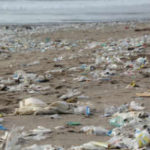Environmental Health Concerns in 2025
As we move through 2025, environmental health continues to be one of the most urgent public health challenges of our time. With ongoing climate shifts, the expansion of urban centers, and more people living in densely populated areas, the health risks linked to our environment have never been more significant. From worsening air pollution and persistent water contamination to growing concerns over food safety and hazardous waste exposure, these issues affect our health on a daily basis.
In this post, we’ll take a closer look at some of the most pressing environmental health threats facing us in 2025. Whether you’ve already encountered these topics or are just now learning about them, this overview can help spark deeper awareness and inspire action.
Air Pollution
Air pollution remains one of the leading causes of preventable illness and death across the globe. The primary sources—industrial emissions, transportation, and fossil fuel combustion—continue to pump harmful particles into the atmosphere. Not only does air pollution worsen asthma and other respiratory conditions, but it’s also been strongly linked to cardiovascular disease, cancer, and even neurological disorders.
In 2025, we’re seeing a greater push for clean air policies, particularly in urban regions where pollution levels are highest. Many cities are expanding electric vehicle infrastructure, tightening emissions standards, and investing in green public transportation.
What you can do:
- Walk, cycle, or take public transport instead of driving
- Support clean energy policies in your community
- Avoid burning waste or using products that release toxic fumes
Water Contamination
Water safety is still a major global concern in 2025. Contaminated drinking water, often caused by agricultural runoff, industrial discharge, and outdated infrastructure, poses a risk to millions. Pathogens, heavy metals, and harmful chemicals can all make their way into our water systems—leading to everything from gastrointestinal illness to long-term developmental effects in children.
Governments are continuing efforts to modernize water treatment plants, regulate agricultural pollutants, and expand access to safe sanitation in underserved areas. However, there’s still much work to be done.
How you can help:
- Reduce plastic use and avoid single-use plastics that often end up in waterways
- Choose eco-friendly, non-toxic cleaning products
- Conserve water and fix leaks around the house
- Volunteer for a river or beach cleanup in your area
Exposure to Hazardous Materials
In 2025, exposure to hazardous substances such as asbestos, lead, pesticides, and even mold continues to threaten public health—especially in low-income and industrial areas. These materials can be found in old buildings, household products, or released through unsafe disposal practices, and they have been linked to cancer, respiratory illnesses, and developmental disorders.
Stronger workplace safety regulations, improved environmental monitoring, and public education campaigns are being prioritized to reduce exposure risks. However, awareness at the individual level is equally important.
Steps you can take:
- Carefully read labels on cleaning, gardening, and personal care products
- Use natural alternatives like vinegar and baking soda for household cleaning
- Be cautious when renovating older homes—consider lead and asbestos testing
- Advocate for better waste management policies in your community
Looking Ahead
These are just a few of the environmental health concerns that continue to shape our daily lives in 2025. While the scale of the problems may feel overwhelming, we each have the power to make a difference. Whether through the choices we make at home or by supporting systemic change at the policy level, our actions matter.
By staying informed and mindful, we can protect not only our personal well-being but also contribute to a healthier, more sustainable world for future generations.






